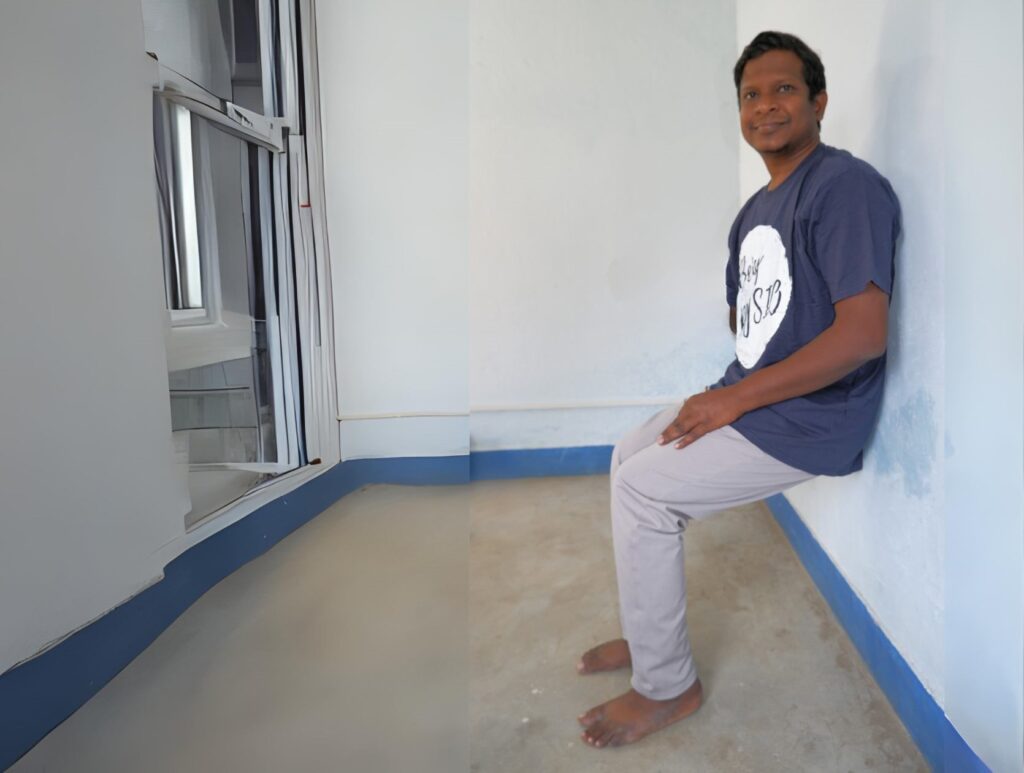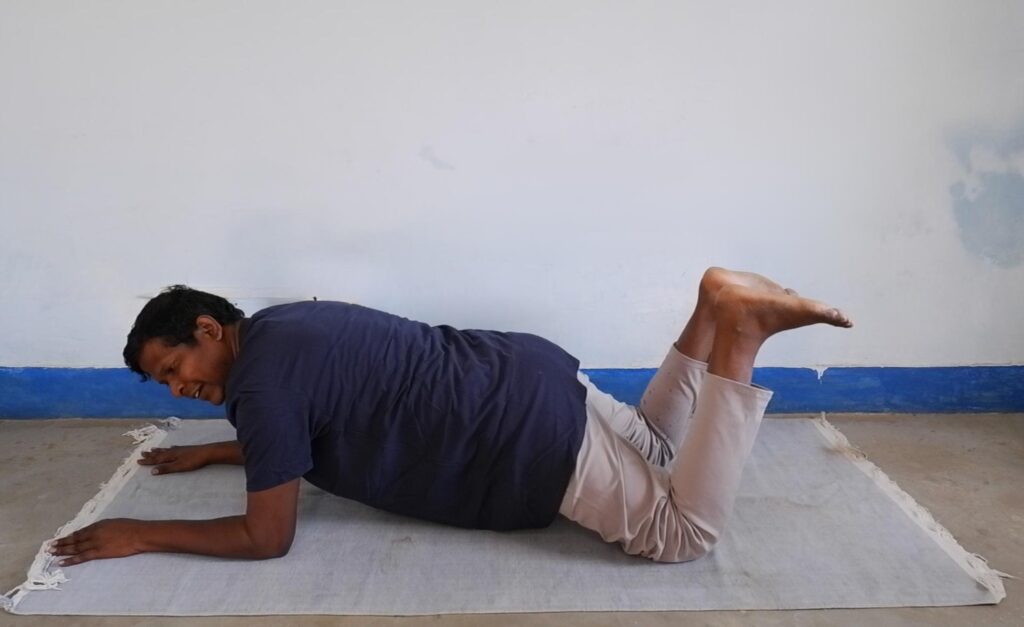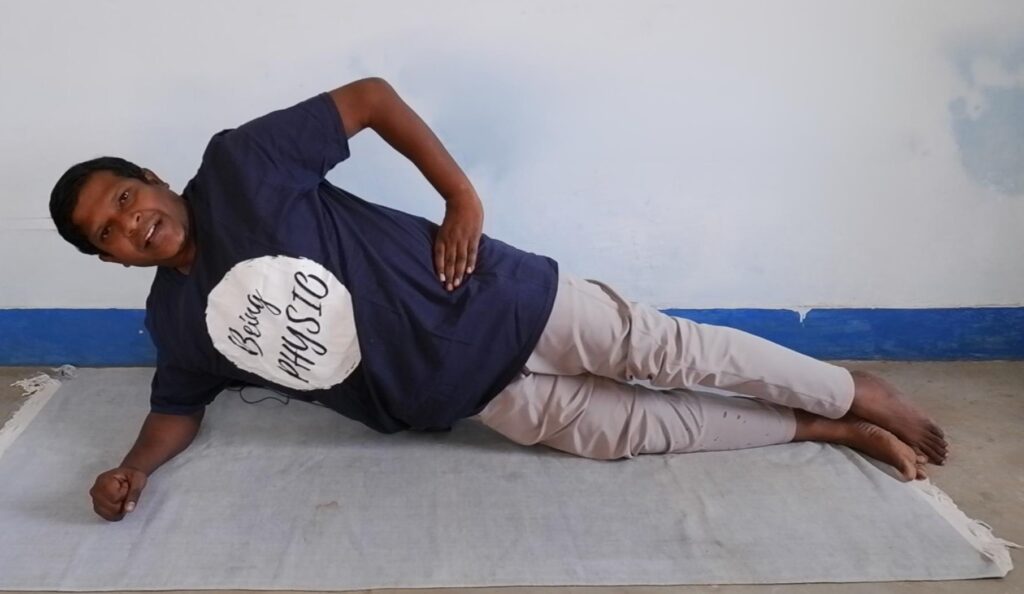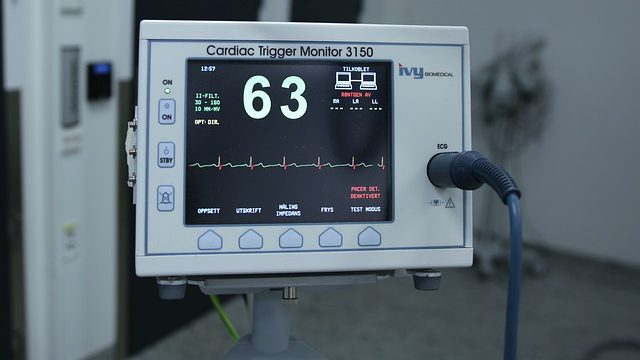Aerobic or cardio are well-known exercise programs for managing cardiovascular diseases such as hypertension. According to a study by the American College of Sports Medicine, exercise can significantly reduce blood pressure in adults with hypertension. However, research has also revealed that isometric resistance exercises are more effective than aerobic exercises for lowering high blood pressure1.
In this article, we’ll explore three easy exercises that research1 has shown to be impactful in reducing blood pressure. These exercises may even help you reduce your dependence on medication.
- Isometric resistance exercise can lower high blood pressure more effectively.
- 1) Wall Squat workout for high blood pressure
- 2) Floor Plank on the knee to cure hypertension
- 3) Side Plank exercise for high BP
- Recommendation to get the most out of isometric resistance training
- Regularly monitor your Blood pressure
- What mechanism makes isometric resistance exercise effective in lowering blood pressure
- Should isometric exercise be performed with cardio exercise?
Isometric resistance exercise can lower high blood pressure more effectively.
There is sufficient research evidence to prove that static resistance exercises are more effective in lowering high blood pressure. I am basing this article on one of the research studies published in the online journal Nature. The study was conducted on 300 people with high blood pressure. Out of which 191 participants did isometric exercises, the other 135 didn’t1.
The participants who did isometric resistance exercises saw their blood pressure go down by a decent amount. Here’s the breakdown:
- Top number (systolic): Down by over 6 points on average.
- Bottom number (diastolic): Down by 2 to 3 points on average.
These are similar reductions to what you might see with some blood pressure medications. These isometric exercises are very simple and can be performed by anyone. So, lets begin with wall squat workout.
1) Wall Squat workout for high blood pressure

Isometric resistance training, or static resistance exercise, involves holding one’s body in a fixed position against resistance. These exercises are called static because there is muscle contraction but no motion in the joint. Our first isometric resistance training for hypertension is wall squats.
- Stand against a wall with your feet shoulder-width apart to perform this exercise. Ensure your back is flat against the wall and your feet are a few inches away.
- Slowly slide down the wall, bending your knees and lowering your hips as if sitting in a chair. Keep your knees aligned with your ankles, and make sure your thighs are parallel to the ground.
- Hold this position for 20 seconds, then slowly slide back up the wall to the starting position.
- Repeat this exercise 3-4 times, taking a break between each set. You can gradually increase the duration of each set as your strength and endurance improve.
2) Floor Plank on the knee to cure hypertension

Static resistance exercise is an effective way to manage hypertension. One such exercise is the plank pose, which targets the core muscles while also helping to regulate blood pressure.
- To do this exercise, lie face down on a mat and place your elbows on the ground, shoulder-width apart. Keep your forearms flat on the ground and your palms facing down.
- Raise your body and come to your knees. While doing this, keep your back straight and hips aligned with your shoulders so that your hips and shoulders reach the same level.
- Hold this plank position for 20 seconds, breathing deeply and evenly throughout.
- Then, relax and repeat the exercise 3-4 times per session.
- Regular practice of this exercise can help strengthen your core and lower your blood pressure.
3) Side Plank exercise for high BP

Our final isometric resistance exercise for high blood pressure is the side plank. This exercise is also straightforward.
- To perform this exercise, start by lying on your side with your legs straight and your elbow directly underneath your shoulder. Your top arm can rest on your hip or reach the ceiling.
- Next, engage your core muscles and lift your hips off the ground, creating a straight line from your head to your heels.
- Hold this position for 10 to 30 seconds, breathing deeply and maintaining good form.
- To increase the challenge, lift your top leg off the bottom leg or reach your top arm towards the ceiling.
- You can also try holding a weight or resistance band to add extra resistance.
Recommendation to get the most out of isometric resistance training
Here are recommendations and best practices to perform these exercises to get the most out of them.
- Perform 3 – 4 repetitions of each. Hold each exercise pose for 20 – 30 seconds and perform it 3-4 times in each session.
- Start slow and gradually increase: If you’re new to IRT, begin with fewer sets and shorter hold times, then gradually increase the duration and number of sets per workout as your strength and endurance improve.
- Allow adequate recovery: We recommend resting between the sets for 1-3 minutes. This is essential before the next set of exercises and allows muscles to recover.
- Aim for 3 sessions per week: The research suggests three sessions per week for optimal results. Consistency is key, so aim for a routine you can stick with in the long run.
Additional Tips:
- Breathe normally: Don’t hold your breath during the contractions. Breathe steadily throughout the exercise to maintain proper oxygen flow.
- Warm-up and cool-down: Like any exercise routine, start with a light warm-up and end with a cool-down to prepare and relax your muscles.
Regularly monitor your Blood pressure
A person suffering from hypertension should regularly monitor their blood pressure. You should visit your health center or measure it at home using a digital blood pressure monitor. You should follow the correct procedure while taking BP at home using a digital BP machine.
According to the World Health Organization, you should aim to keep your blood pressure below 140/90.
What mechanism makes isometric resistance exercise effective in lowering blood pressure
The author of the study paper does not understand the exact mechanism, but it is thought that it helps decrease systemic vascular resistance. Systemic vascular resistance is the resistance the blood encounters when it flows through the blood vessel.
Let me simplify it!
Imagine blood flowing like water flowing through a pipe. If the pipe is more elastic, it offers less resistance to the water flow, especially when under pressure. On the other hand, if the water flows through a more rigid pipe, it creates more resistance.
Similarly, blood vessels with a more excellent elasticity offer less resistance (lower SVR), allowing blood to flow more efficiently even when the heart pumps harder. Conversely, narrower or stiffer blood vessels create more excellent resistance (higher SVR), making blood flow harder.
The study suggests that isometric resistance training (IRT) may lower blood pressure by reducing SVR. This means that the static exercise we discussed could help blood vessels relax and widen, allowing blood to flow more easily and lowering blood pressure.
Should isometric exercise be performed with cardio exercise?
Yes? Instead, performing isometric and cardio will benefit your musculoskeletal and heart health. Aerobic exercise, also called cardio, is the most basic way to keep your heart fit and healthy and check your blood pressure.
It includes brisk walking, jogging, cycling, swimming, or even using a treadmill at home; you can choose from these and perform them in any combination. These activities strengthen your heart and improve blood flow. In fact, according to the American College of Sports Medicine, “Regular aerobic exercise results in reductions in blood pressure of 5-7 mmHg among individuals with hypertension, and these reductions translate to a reduced risk of CVD of 20-30%.”
Keep Reading: If you snore regularly, you risk high blood pressure; Learn to cure it naturally
The author is a physiotherapist who has been practising for the last 17 years. He holds a Bachelor's in Physiotherapy (BPT) from SVNIRTAR (Swami Vivekananda National Institute of Rehabilitation and Research), one of the prestigious physiotherapy schools in India.
Whatever he learns dealing with his patient, he shares it with the world through blogs and e-books. He also owns a YouTube channel, "Sunit Physiotherapist" with over 8 lakh active subscribers. Here, he shares everything he gets to learn serving the patient.





